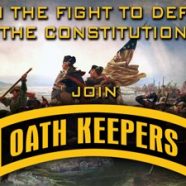
A key driver of the severe polarization today has been the aggressive, disruptive action of extremist militia groups. The far-right in America is basically a decentralized network of groups, militias and political movements. Their “reason for being” consists of three core brand values in common:
- Passionate resistance to government overreach, often reflected in violence
- An obsession with individual freedom and independence, even if negating major social benefits
- A philosophy built mainly on false conspiracy theories and disinformation, usually spread over social media.
Most of these extremist groups evolved in the past decade. Violence is a hallmark for many. A recent poll by the University of Chicago’s Institute of Politics found that 38% of conservatives believe that it may soon be necessary to take up arms against the government.
The Covid-18 pandemic provided a major boost for uniting the rage of several groups, especially for the “People’s Rights”, as they rallied around the idea that government officials were trampling on their individual freedom by imposing mask mandates and lockdowns. The Armed Conflict Location & Event Data Project (ACLED) tracks political violence around the world and identified nearly 4,000 protests against Covid-19 constraints across America since 2020.
The Most Influential Extremist Groups
While some 228 different militias, mostly right–wing, have organized 2,335 major events over the past two years, the predominant ones often work together (e.g. the January 6th attack) as their style and beliefs are very similar. Most are against public healthcare, voting rights, environmentalism, and mainstream media, and are anti-Semitic:
- Oath Keepers – incorporated in 2009 by a former paratrooper, an anti-government radical militia with membership of 38,000, two-thirds are former military or law enforcement personnel (one tenth on active duty), claiming to defend the U.S. Constitution.
- People’s Rights – a network sharing a fear that their individual rights are being eroded by America’s federal government. Its origin is tied to Ammon Bundy’s armed standoffs in Nevada in 2014 and in Oregon in 2016. Bundy officially created this group in 2020 in response to the Covid-19 restrictions.
- Proud Boys – founded in 2016 and often described as “street brawlers”, this is the most aggressive group, using violence as a core tactic. Known for their opposition to left-wing and progressive groups, it is an exclusively male organization, officially designated as a terrorist group in Canada and New Zealand. Trump supported this group when he told them in 2020 to “stand back and stand by”.
- Three Percenters – focused mainly on gun ownership rights, it was created in 2008 in response to the election of Obama. This libertarian militia group opposes federal government in local affairs, and believes that county sheriffs are “the supreme law of the land”.
- Boogaloo Boys – a far-right, pro-gun anti-government movement that gained widespread attention in 2019 when they announced plans for a second American Civil War. They were involved in the plot to kidnap Governor Whitmer in Michigan and disrupting the George Floyd protests.
- QAnon – originated in 2017, it is a political movement or cult based mainly on a conspiracy theory that the world is being run by a cabal of pedophiles and “deep state” elites, who operate a global child sex-trafficking ring and worship Satan. QAnon followers often attend Trump rallies.
New Branding Strategy
The January 6th insurrection marked a turning-point for these far-right militias. As of August 10, 2022 226 people have been sentenced for taking part in the attack. As a result, there have been fewer protests and a steep decline in far-right violence (source: ACLED).
Instead many of these extremist groups are re-positioning their brands to take a different approach – i.e. participating in mainstream politics and elections. For example, at least 28 elected conservatives in Arizona have ties to the Oath Keepers (source: Buzzfeed News). Also a recent IREHR investigation of Facebook profiles found that 12% of all legislators and 22% of Republicans belonged to at least one far-right group. Hopefully voters will recognize the risks of electing those officials who manifest their hatred and violent tendencies through the ballot box.



Connect with us